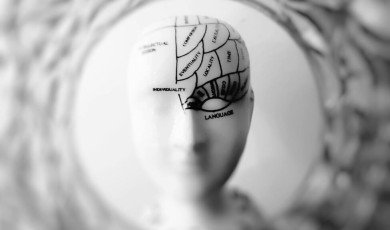
For centuries, people have wondered just how much of our mental capacity remains untapped. Neuroscience keeps uncovering new layers of complexity in the human brain, from hidden patterns of memory to lightning-fast, unconscious decisions. Now, with advanced algorithms decoding patterns we can’t see on our own, we’re discovering that our minds are wired for far more creativity, insight, and learning than we typically access in daily life.
The most exciting part of this shift is how accessible these breakthroughs have become. Modern AI tools are no longer reserved for research labs or giant corporations; they are available to individuals and small teams who want to think faster, learn deeper, and make better decisions. By combining machine intelligence with our natural abilities, we can finally tap into mental strategies that were previously invisible or underused.
1. Revealing Hidden Patterns in How You Think
Our brains constantly filter information, discarding what seems irrelevant and focusing only on what matches our expectations. This is helpful for survival but terrible for recognizing new opportunities. AI systems, however, excel at pattern detection across huge sets of data and ideas. When you feed them notes, documents, or research, they can highlight recurring themes, gaps, and connections you never consciously noticed.
This is like having a cognitive mirror that reflects your thinking style back to you. By analyzing what you read, write, and search for, advanced algorithms can expose blind spots, reveal hidden strengths, and suggest unfamiliar angles. Over time, this feedback can reshape how you approach problems, making you more strategic and less reactive.
2. Turning Passive Reading into Active Insight
Most people read passively: they consume articles, books, and reports without transforming that information into something they can easily use or remember. Intelligent systems can change this by converting raw input into structured, personalized knowledge. They can summarize texts, extract key points, and create outlines tailored to your goals instead of offering one-size-fits-all notes.
This transforms learning from a vague “I read about that once” into concrete takeaways. When an algorithm repeatedly highlights what matters most to you and organizes it logically, your brain spends less time sifting and more time integrating. The result is deeper comprehension, faster recall, and a far richer mental map of whatever you’re studying.
3. Unlocking Creative Combinations You’d Never Consider
Human creativity often depends on combining ideas from different domains, but we’re limited by the information we’ve personally encountered. Advanced methods can cross-reference concepts from wildly different fields in seconds. They can generate analogies, reframe problems, and offer alternative approaches that don’t fit your usual patterns of thought.
This doesn’t replace human imagination; it amplifies it. Instead of starting from a blank page, you start with a range of surprising options. From there, your brain does what it does best: judge, refine, and adapt. Over time, this collaboration can stretch your creative muscles and lead to original solutions that would have been almost impossible to produce alone.
4. Making Invisible Decision Biases Obvious
Our minds rely on shortcuts—biases and heuristics—that speed up decisions but often lead us astray. We overweight recent events, ignore conflicting evidence, and fall in love with our first idea. Intelligent systems can analyze your choices and highlight patterns you might prefer to ignore. For example, they can show when you consistently underestimate risks, overvalue certain sources, or repeat past mistakes.
By turning these hidden biases into visible data, you gain an opportunity to course-correct. Instead of guessing whether you’re being objective, you can compare your instincts with the objective patterns that emerge over time. This can dramatically improve strategic planning, negotiations, and everyday decision-making.
5. Extending Working Memory Beyond Natural Limits
Working memory—the small mental workspace we use to hold and manipulate information—is easily overloaded. When we juggle too many details at once, our thinking becomes shallow and error-prone. Intelligent systems act as an external extension of this workspace, tracking variables, constraints, and possibilities while you focus on judgment and direction.
This is especially powerful for complex projects or multifaceted problems. Instead of wasting mental energy remembering every detail, you can offload that burden and concentrate on high-level insight. Over time, this trains you to think more systematically and to design workflows that minimize cognitive overload.
6. Accelerating Skill Development Through Feedback Loops
The brain thrives on feedback. Yet in many areas of life—writing, idea generation, strategic thinking—we get very little high-quality, immediate response. Intelligent systems can fill this gap by providing constant, targeted critiques and suggestions. Whether you’re crafting a proposal, refining a pitch, or structuring a research plan, they can flag weaknesses, clarify logic, and propose alternatives instantly.
This compressed feedback cycle allows you to iterate rapidly. With each revision, your brain learns what strong structure, clear reasoning, and effective communication look like. Over time, that know-how becomes internalized, raising your baseline performance even when you’re not actively using any digital assistance.
7. Turning Fragmented Ideas into Coherent Strategies
Many people carry around half-formed ideas: notes scattered across devices, random thoughts, and disconnected insights. On their own, these fragments have limited value. Intelligent systems can aggregate, categorize, and connect them into something usable—an outline, a roadmap, or even a full strategic plan.
This process mirrors how the brain naturally forms narratives, but it does so at a much larger scale and with more consistency. The result is that you spend less time feeling mentally cluttered and more time executing on clearly defined goals. It’s a practical way to transform mental noise into focused action.
8. Supporting Deep Focus in a Distracted World
Modern life encourages constant context-switching, which fragments attention and weakens our ability to think deeply. Intelligent tools can act as guardians of focus. They can help you structure tasks, break complex work into manageable steps, and keep track of where you left off so you can re-enter deep work faster.
By handling repetitive organization and reminding you of priorities, they free up mental space for what truly matters: sustained concentration on challenging problems. Over time, this builds your capacity for deep focus, a cornerstone of high-level cognitive performance.
Conclusion: A Partnership That Expands Human Potential
The real story is not that machines outthink us, but that they expose mental capabilities we rarely use. When algorithms handle pattern detection, organization, and rapid iteration, our minds are freed for higher-order work: judgment, creativity, empathy, and big-picture vision. This partnership doesn’t diminish human intelligence; it extends it.
As these systems continue to evolve, the gap between what the brain can do and what most people habitually do will become even more obvious. Those who learn to collaborate with intelligent tools will unlock deeper insight, faster learning, and more original ideas. The potential has always been there—now we finally have the means to access it.






